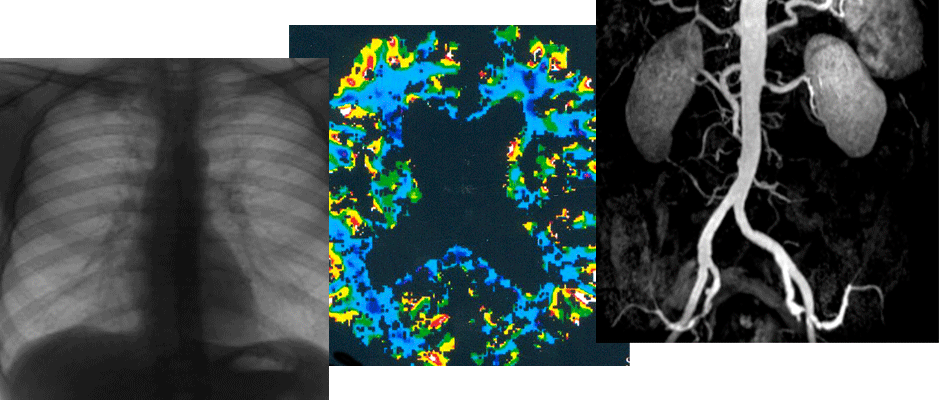Abstract: Infra-popliteal lesions rarely were the zone of interest in first years of endovascular era. Nowadays, broad worldwide experience of transluminal interventions and appearance of low-profile instruments allowed broadening of the indications for transluminal repair of the below-the-knee arteries. The method is proved to be safe and effective. Results of 121 angioplasties in 70 patients with chronic ischemia of the legs (12 years work of a city hospital) are analyzed in the article. The main indication was stenotic and occlusive infrapopliteal lesions excluding the possibilities of bypass surgery. It was shown that the endovascular approach is extremely effective, and in cases of diabetic angiopathy and critical lower extremities ischemia, an endovascular intervention can be not only the way to save a leg, but the only way to save the patient's life. Reference 1. Sprayregen S., Sniderman K.W., Sos Т.А. et al. Popliteal artery branches: percutaneous transluminal angioplasty. Am. I. Roentgenol. 1980; 135: 945-950. 2. Sivananthan U.M., Browne T.F., Thorley P.J., Rees M.R. Percutaneous transluminal angioplasty of the tibial arteries. Br. J. Surg. 1994; 81 (9): 1282-1285. 3. Baum S., Pentecost M.J. Infrapopliteal revascularization. Abrams angiography interventional radiology second edition. 2006;348-261. 4. Dorros G., Jaff M.R., Kelly K.J. et al. The acuteoutcome of tibioperoneal vessel angioplasty in417 cases with claudication and critical limbischemia. Cathet. Cardiovasc. Diagn. 1998; 45: 251-256.. 5. Alfkel H. Long-term results after infrapopliteal/CIRSE. Италия. 2006.Покровский А.В. Состояние сосудистой хирургии в России в 2006 году. М. 2007; 9-13. 6. Rizzati R., Tartari S.. Infra-popliteal revascu larization in critical limb ischemia: three year experience in endovascular and surgical treatment/CIRSE. Италия. 2006; 191. 7. Tsetis D., Belli A.M. The role of infrapopliteal angioplasty. Br. J. Radiol. 2004; 77 (924): 1007-1015. 8. Затевахин И.И., Шиповский В.Н., Золкин В.Н. Баллонная ангиопластика при ишемии нижних конечностей. М.: Медицина. 2004; 231-249. 9. Siablis D., Karпabatidis D., Katsanos К. Infrapopliteal paclitaxel-eluting stents for critical limb ischemia: six-month clinical and angiographic results/CIRSE. Италия. 2006; 196. 10. Зеленов М.А., Ерошкин И.А., Коков Л.С. Особенности ангиографической картины у больных с сахарным диабетом с окклюзионно-стенотическим поражением артерий нижних конечностей. Диагностическая и интервенционная радиология: 2007; 1 (2): 22-30.
Abstract: Purpose. To assess early and late results of iliac arteries balloon angioplasty and stenting in patients with chronic lower limb ischemia. Material and methods. We analyzed the results of terminal aortic and iliac lesions endovascular treatment in 222 patients. All the patients presented symptoms of lower-limb chronic ischemia: 2nd «b» grade - 51,2%; 3rd grade - 27,1%; 4th grade - 21,7%. Two hundred and fifty eight procedure were performed, including 98 (38%) balloon angioplasty and 160 (62%) stenting. The lesions were Type A -26%, Type B - 45%, Type C - 23%, and Type D - 51% according to TASC II classification. Results. Immediate angiographic success rate was 99,4%, complication rate -1,3% (4 of 314). Cumulative primary patency after balloon angioplasty in terms of 1, 3 and 5 years were correspondingly 97,9%, 82,0% and 64,2%. After stenting it was as high as 98,1%, 85,2% and 71,8%. Secondary patency after balloon angioplasty in terms of 1, 3 and 5 years was correspondingly 99,0%, 89,4% и 75,6%. For stenting it was 99,4%, 93,0% and 85,6% (Kaplan - Meier). Long-term clinical success rates in 1 year, 3 and 5 years were correspondingly 97,9%, 98,7% and 88,8% for angioplasty and 92,6%, 63,7% and 72,6% for stenting. Five-year limb preservation rate was 92,4% for angioplasty and 98,6% for stenting. Conclusions. Endovascular interventions are proved to be safe and efficient for iliac arteries atherosclerotic lesions, and to have good long-term results. References 1. Кошкин В.М. Амбулаторное лечение атеросклеротических поражений сосудов нижних конечностей. Ангиология и сосудистая хирургия. 1999; 1: 106 -113. 2. Покровский А.В. и др. Российский консенсус. Рекомендуемые стандарты для оценки результатов лечения пациентов с хронической ишемией нижних конечностей. М.2001; 16. 3. Kannel W. et аl. Intermittent Claudication:incidence in the Framingham-Study. Circulation. 1970; 41: 875-883. 4. Живарев Г.В., Коротков Н.И., Александров А.Л. и др. Исходы аортобедренного шунтирования при синдроме Лериша. III всероссийский съезд сердечно-сосудистых хирургов. М. 1996; 253. 5. Казанчян П.О., Попов В.А., Дебелый Ю.В. и др. Аорто-подвздошно-бедренные реконструкции методом эверсионной эндартерэктомии. Разумный возврат к прошлому. Ангиология и сосудистая хирургия. 1999; 5: 71-80. 6. Гуч А.А., Верещагин С.В., Кондратюк В.А. Определение показаний к первичному рентгеноэндоваскулярному протезированию артерий подвздошно-бедренного сегмента. Эхография. 2000; 1 (2): 155-158. 7. Bosch J.L., Hunink M.G.M. Metaanalysis of the results of percutaneus transluminal angioplasty and stent placement for aortoiliac occlusive disease. Radiology. 1997; 204: 87-96. 8. TASC II. Transatlantic Intersociety Consensus (TASC) document on management of peripheral arterial disease. Eur. J. Vase. Endovasc. Surg. 2007; 1: 63-65. 9. Saket R.R. et аl. Novel intravascular ultrasound-guided method to create transintimal arterial communications: initial experience in peripheral occlusive disease and aortic dissection. J. Endovasc. Ther. 2004; 11 (3): 274-280. 10. Becker G.J. et аl. Noncoronary angioplasty. Radiology. 1989; 170 (3): 921-940. 11. Затевахин И.И., Дроздов С.А., Хабазов Р.И. Допплеросфигмоманометрия в диагностике поражений глубокой артерии бедра. Клиническая хирургия. 1985; 7: 24-2








